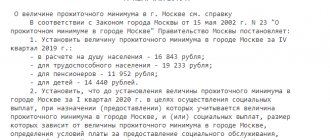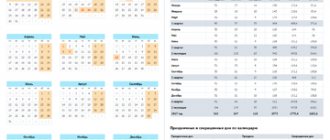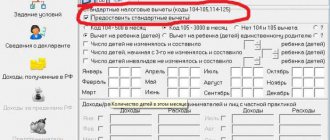Learning the multiplication table is easy if you use a game teaching method.
It is difficult for a primary school student to immediately master such a mathematical operation as multiplication. Hard work will definitely bear fruit, but first you need to understand the reasons for the baby’s difficulties.
It often happens that a child who is successfully mastering the primary school curriculum experiences difficulties when passing the topic “Multiplication”. Parents do not need to panic and should not scold the baby.
Tip: Give extra lessons and help your son or daughter remember these simple steps.
How to teach a child multiplication, how to explain?
How to teach and explain the multiplication table?
Second grade students have difficulty memorizing the multiplication table, as children do not understand the essence of the mathematical operation “multiplication.” How to teach a child multiplication, how to explain:
- Take the counting sticks and place them in pairs on the table. For example, 4 pairs. The child must count how many sticks are on the table
- Let the child write down the addition as an example: 2+2+2+2=8. Explain to your child the features of this action: the same numbers are added
- Continue the row of additions and place two or three more pairs of sticks on the table. Write down the example on paper: 2+2+2+2+2+2= 12
- Explain to your child that this action can be written as a multiplication: 2x6 = 12
- Now invite your child to do one more action. Lay out, for example, 8, 9 or 10 pairs of counting sticks on the table. Let the child create multiplication actions on his own. You will see with what interest he will do this
Important: When multiplication “by 2” is mastered, you can move on to more complex actions.
Help your child understand the physical meaning of multiplication
This can be done by drawing rectangles on the table with sides corresponding to the numbers being multiplied.
For example, this is how you can show what 2 × 4 is - these are two rows of four cells each.
Invite your child to count how many cells fit in the resulting rectangle. So he will discover for himself that 2 × 4 = 8.
Scan or print several copies of the Pythagorean table and, together with the student, draw other rectangles - horizontal, vertical, small and large, counting how many cells they contain. In this way, you at the same time use visual memory: remembering how much, for example, 3 × 4 is, the child will imagine the corresponding figure - and answer easily.
Multiplication table simulator
Multiplication Table Trainer
Important: It’s good for children’s memory when a child sees a mathematical operation clearly. Buy posters with the multiplication table or draw it yourself on a sheet of A1 paper.
Explain to your child that he only needs to remember 36 combinations. Other actions are repeated or very simple.
When the baby understands the peculiarity of these actions, the entire multiplication table will seem easy to him. The simulator will help your memory remember complex actions and learn simple actions without spending a lot of time on them.
Multiplication table by 2
Multiplication table by 2
It is easy to multiply any number by “2”, since it is adding this number twice.
Multiplication table by 2:
2x1=2 (2 is repeated 1 time - it turns out 2)
2x2=4 (2 is repeated 2 times - it turns out 4)
2x3=6 (2 is repeated 3 times - it turns out 6)
2x4=8 (2 is repeated 4 times - it turns out
2x5=10 (2 is repeated 5 times - it turns out to be 10)
2x6=12 (2 is repeated 6 times - it turns out to be 12)
2x7=14 (2 is repeated 7 times - it turns out to be 14)
2x8=16 (2 is repeated 8 times - it turns out to be 16)
2x9=18 (2 is repeated 9 times - it turns out 18)
2x10=20 (2 is repeated 10 times - it turns out to be 20)
Explain that the task is twice as simple as it seems
Together, multiply 3 by 4. Now invite your child to swap the numbers: choose 3 not in a vertical column, but in a horizontal line. And 4, respectively, in the column on the left. Please note that the result will be the same. Both 3 × 4 and 4 × 3 equal 12.
This rule is called the commutativity property. Or in children's language, “the result does not change by changing the places of the factors.”
There is no need to remember how much 3 × 4 or 4 × 3 is. It is enough to learn that the numbers 3 and 4 in any order when multiplied by each other give 12.
A simple conclusion follows from the commutative property. The multiplication table is half the size and simpler than it seems. If you know how much 4 × 7 is, then you automatically know how much 7 × 4 is. You do not need to learn this further.
Multiplication table by 3
Multiplication table by 3
Explain to your child, using a clear example, how multiplication by “3” occurs so that he understands. Then he will be able to quickly remember this action.
Multiplication table by 3
3x1=3 (3 is repeated 1 time - it turns out 3)
3x2=6 (3 is repeated 2 times - it turns out 6)
3x3=9 (3 is repeated 3 times - it turns out 9)
3x4=12 (3 is repeated 4 times - it turns out to be 12)
3x5=15 (3 is repeated 5 times - it turns out to be 15)
3x6=18 (3 is repeated 6 times - it turns out 18)
3x7=21 (3 is repeated 7 times - it turns out 21)
3x8=24 (3 is repeated 8 times - it turns out to be 24)
3x9=27 (3 is repeated 9 times - it turns out to be 27)
3x10=30 (3 is repeated 10 times - it turns out 30)
Multiplication table by 4
Multiplication table by 4
The fourth column of the multiplication table is still easy and the child will easily remember it. Help your baby with your tips and support in the form of words of encouragement and praise, and he will definitely be able to do everything.
Multiplication table by 4
4x1=4 (4 is repeated 1 time - it turns out 4)
4x2=8 (4 is repeated 2 times - it turns out
4x3=12 (4 is repeated 3 times - it turns out to be 12)
4x4=16 (4 is repeated 4 times - it turns out to be 16)
4x5=20 (4 is repeated 5 times - it turns out to be 20)
4x6=24 (4 is repeated 6 times - it turns out 24)
4x7=28 (4 is repeated 7 times - it turns out to be 28)
4x8=32 (4 is repeated 8 times - it turns out 32)
4x9=36 (4 is repeated 9 times - it turns out 36)
4x10=40 (4 is repeated 10 times - it turns out 40)
Hack the system
Usually the multiplication table on the back of school notebooks looks like this.
Photo: Ramif / Depositphotos
Just the sight of these endless columns of numbers can drive an energetic elementary school student into despair. Therefore, without a doubt, take a bold marker and cross out the mathematical torture in front of your child’s eyes. This is not just a performance, but a way to create a positive attitude.
Instead of complex examples, offer the student the Pythagorean table.
This is the real multiplication table. Show your child how easy it is to use.
The result of multiplying two digits is the number that is at the intersection of the row and column with the corresponding digits. For example, to multiply 3 by 4, it is enough to mentally draw two lines: one horizontal from the number 3 in the left column, and a second vertical from the number 4 in the top line. The result is 12.
Multiplication table by 5
Multiplication table by 5
The fifth column of the multiplication table is easy mathematical operations. To get the result, you need to multiply the number by which “5” is multiplied by “10”, and then divide it in half.
Important: When a child understands how numbers are multiplied by “5,” a logical chain of each action from this column will eventually appear in his head. Thanks to this, he will be able to multiply by “5” instantly.
Multiplication table for 5:
5x1=5 (5 is repeated 1 time - it turns out 5)
5x2=10 (5 is repeated 2 times - it turns out 10)
5x3=15 (5 is repeated 3 times - it turns out 15)
5x4=20 (5 is repeated 4 times - it turns out 20)
5x5=25 (5 is repeated 5 times - it turns out to be 25)
5x6=30 (5 is repeated 6 times - it turns out 30)
5x7=35 (5 is repeated 7 times - it turns out 35)
5x8=40 (5 is repeated 8 times - it turns out 40)
5x9=45 (5 is repeated 9 times - it turns out 45)
5x10=50 (5 is repeated 10 times - it turns out 50)
6 times table
Multiplication table by 6
With multiplication by “6,” the first difficulties appear: actions are difficult to remember, and the numbers turn out to be large.
Important: Explain to your child that the “6x6” row is a repetition of works from previous columns that have already been learned. There are only four complex actions left to learn.
Multiplication table for 6:
6x1=6 (6 is repeated 1 time - it turns out 6)
6x2=12 (6 is repeated 2 times - it turns out 12)
6x3=18 (6 is repeated 3 times - it turns out to be 18)
6x4=24 (6 is repeated 4 times - it turns out to be 24)
6x5=30 (6 is repeated 5 times - it turns out 30)
6x6=36 (6 repeated 6 times - gets 36)
6x7=42 (6 is repeated 7 times - it turns out 42)
6x8=48 (6 repeated 8 times - it turns out 48)
6x9=54 (6 is repeated 9 times - it turns out 54)
6x10=60 (6 is repeated 10 times - it turns out 60)
Teach your child math tricks
Here are some simple examples.
Trick with multiplication by 7
You will need some dice (dice). Tell your child that no matter how many dice he throws, you will immediately tell the sum of the dots on their top and bottom faces - even though the bottom of the dice is not visible.
The secret is simple: the cubes are arranged in such a way that the sum of the points on the top and bottom surfaces is always equal to 7. Thus, to find out the correct answer, it is enough to multiply the number of thrown dice by 7.
Invite your child to show the trick to his brother or sister, grandparents, or friends. Let the student change the number of cubes. This will help him reinforce multiplication by 7 in his memory.
Trick with multiplication by 9
Photo: sqback / Depositphotos
Turn both palms towards you. There will be 10 fingers in front of you. Mentally number them from 1 to 10: left thumb - 1, index finger - 2 and so on, up to the right thumb, which will correspond to 10. Then proceed like this.
- Select the number you want to multiply 9 by.
- Press the corresponding finger down.
- Count how many fingers remain to the left of the one pressed - these will be tens in the desired answer. On the right are units.
For example, you need to multiply 9 by 2. You press your second finger - your left index finger. To the right of it there remains 1 finger (the number of tens), to the left - 8 (the number of units). Correct answer: 9 × 2 = 18.
Multiplication table for 7
Multiplication table by 7
The seventh column of the multiplication table is usually easier to remember than the subsequent ones. It has a couple of difficult steps that you need to learn.
Multiplication table for 7:
7x1=7 (7 is repeated 1 time - it turns out 7)
7x2=14 (7 is repeated 2 times - it turns out 14)
7x3=21 (7 is repeated 3 times - it turns out to be 21)
7x4=28 (7 is repeated 4 times - it turns out 28)
7x5=35 (7 is repeated 5 times - it turns out 35)
7x6=42 (7 is repeated 6 times - it turns out 42)
7x7=49 (7 is repeated 7 times - it turns out 49)
7x8=56 (7 is repeated 8 times - it turns out 56)
7x9=63 (7 is repeated 9 times - it turns out 63)
7x10=70 (7 is repeated 10 times - it turns out 70)
8 multiplication table
Multiplication table by 8
The last difficult column of the multiplication table. If the child remembers the previous columns well, then it will not be difficult for him to learn multiplication by “8”. There are only two new actions: 8x8 and 8x9
Multiplication table for 8:
8x1=8 (8 is repeated 1 time - it turns out
8x2=16 (8 is repeated 2 times - it turns out 16)
8x3=24 (8 is repeated 3 times - it turns out to be 24)
8x4=32 (8 is repeated 4 times - it turns out 32)
8x5=40 (8 is repeated 5 times - it turns out 40)
8x6=48 (8 is repeated 6 times - it turns out 48)
8x7=56 (8 is repeated 7 times - it turns out to be 56)
8x8=64 (8 repeated 8 times - gets 64)
8x9=72 (8 is repeated 9 times - it turns out 72)
8x10=80 (8 is repeated 10 times - it turns out to be 80)
Multiplication table by 9
Multiplication table by 9
The ninth column is one of the easiest. We have already multiplied all numbers by “9”. Therefore, the baby will have to learn only one action: 9x9
Multiplication table for 9:
9x1=9 (9 is repeated 1 time - it turns out 9)
9x2=18 (9 is repeated 2 times - it turns out 18)
9x3=27 (9 is repeated 3 times - it turns out to be 27)
9x4=36 (9 is repeated 4 times - it turns out 36)
9x5=45 (9 is repeated 5 times - it turns out 45)
9x6=54 (9 is repeated 6 times - it turns out 54)
9x7=63 (9 is repeated 7 times - it turns out 63)
9x8=72 (9 is repeated 8 times - it turns out 72)
9x9=81 (9 is repeated 9 times - it turns out 81)
9x10=90 (9 is repeated 10 times - it turns out 90)
Multiplication table - game for children
Multiplication table - a game for children
Today you can find many different methods for memorizing the multiplication table. Mathematics is a difficult science, but for a child it doesn't have to be. If you teach your child correctly, he will easily perceive and remember any information.
The easiest way to learn multiplication tables is with a game for children. If the child is willing to go to classes, then he will be able to remember everything that will be offered to him in these classes.
Important: If you see that the child is not in the mood to study, for example, he is capricious. Postpone the lesson until a more appropriate time.
Games for children to quickly learn the multiplication tables:
Show that math is useful
It is difficult for children, and even adults, to remember abstract things - those that are not used in everyday life. Your task is to demonstrate to your child that the multiplication table is very useful. This can be done in different ways.
For example, offer a schoolchild going for a walk to treat his friends with candy or cookies. “Katya, Vasya, Platon and Ira are waiting for you on the site. You are going to give each of them 2 candies. How many candies do you need to take?
Another option: have your child count the total number of wheels on six cars passing by. Or find out how many people will go on a picnic if you are going to meet four families, each with three people.
Multiplication in verses for children
Multiplication in verses for children
As mentioned above, the main rule for teaching a child the multiplication table is a playful form of lessons. You can use multiplication in poems for children.
Important: Poems are well remembered because of the rhyme, which means that the multiplication table will also be perfectly remembered in the child’s mind.
Parents can come up with poems on their own or together with their child. It's interesting and exciting. Here are a few verses on the operations of the multiplication table:
Poems - multiplication by 2
Multiplication by 5 in verse
Multiplication by 8 in verse
Poems - multiplication by 8
Multiplying by 5 - poetry
Multiplying by 8 - verses
Play math
Today you can buy many teaching aids with colorful pictures and thoughtful logic problems. Thanks to such exercises, learning turns into an exciting game. But you can play without spending money on books.
Use ready-made dice games
Any action game in which the player advances by the number of cells indicated by the thrown die will do. Tell your child that today all throws count as doubles (or, let's say, triples). Children generally love the idea of going two or three times further than the cube indicates.
To add interest to the game, try to cheat regularly. For example, say: “So, I got a 4, which means I have to go twice as far... 10 squares!” Let your child correct you.
Encourage your child to get ahead of the calculator
You will need the same dice (if the child is learning multiplication from 1 to 6) or a deck of playing cards without pictures (if we are talking about multiplying numbers from 6 to 10). Have the student roll two dice or draw two cards from the deck.
Having seen the numbers, you multiply them on a calculator, and the child does the same procedure in his head. Whoever does it faster gets a point.
The game can last, for example, up to 7 points. The winner receives a pre-agreed prize.








